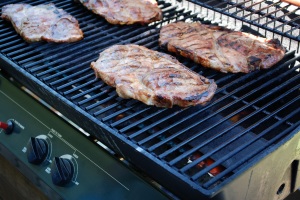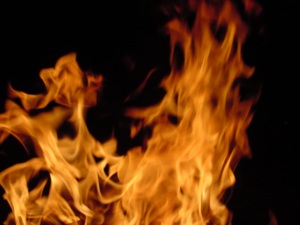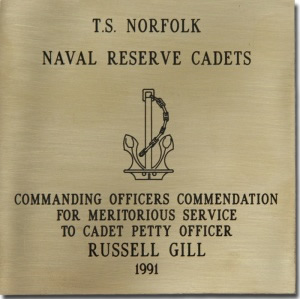
Don't Get Caught Catching a Goldfish - Fishing Size Limits
Posted: Friday, August 19, 2011 at 9:48:51 AM EST by
Fishing is long engrained as an enjoyable lifestyle by many Australians.
Like anything enjoyable there are rules and regulations which need to be adhered to. In this post you will find a handful of common fish found in Queensland waters along with their description and size limitations, as per the Department of Primary Industries and Fisheries.
Spanish Mackerel
The Spanish mackerel is found in coastal waters to depths of 15m to 200m along the length of the Queensland coast. Commonly the Spanish mackerel can be 50cm to 80cm in length but can be as large as 120cm at a maximum weight of approximately 30kg.
The size limit for the Spanish mackerel is 75cm with a bag limit of three. It is important to note that one pectoral fin must be removed to mark that the fish has been caught recreationally before putting into storage.
Also known as the narrow-barred mackerel, the Spanish mackerel is often misidentified as the broad-barred mackerel. The Spanish mackerel has numerous thin, wavy vertical bands on its body which is an iridescent blue-grey back and silver sides with bluish reflections. Juveniles of the Spanish mackerel are often spotted on their body.
Sand Whiting
Often called summer whiting and blue-nose whiting the sand whiting is found along coastal beaches, sandbars and surf zones, bays, estuaries and coastal lakes south from and including Cape York. A common length of the sand whiting is around 25cm with the minimum length requirement at 23cm. You can bag 30 whiting but this includes golden-lined, sand and northern whiting.
The sand whiting adult fish are a uniform silver colour with a dark spot at the base of the pectoral fin, which differentiates it from the golden-lined whiting. The pectoral, pelvic and anal fins are pale yellowish in colour whilst the dorsal fin is pale olive-green. The snout of the sand whiting has a dull blue-grey tinge on very large specimens. The distinguishing feature that separates the sand whiting from the trumpeter whiting is that the anal fin has 15-17 soft rays.
Tailor
Also known as chopper tailor and greenback tailor this species of fish has a greenish-blue back with silvery belly and sides. The dorsal fins and anal fin are pale green tinged with yellow. The pectoral fins are bluish at the base whilst the caudal fin is a dull greenish tinge with yellow. Tailor have prominent, sharp teeth compressed in a single series.
Often found along the coastline in bays and estuaries all along the Queensland coast the tailor is commonly around 40cm in length up to approximately 110cm with the minimum size requirement set at 35cm and a bag limit of 20.
Mangrove Jack
Often misidentified with the golden snapper, the mangrove jack has a greenish-brown to reddish back and sides with a long snout with long canine teeth in its mouth. The belly is slightly red to bronze with white edges on the scales. Eight whitish bars are along the sides of the younger juvenile fish, along with one or two blue lines on their cheeks.
Found in deeper reef areas to depths of 100m, the mangrove jack, as its name hints, can also be found in mangrove estuaries and lower reaches of freshwater streams throughout Queensland. Its size can reach 120cm in length but the minimum size requirement is 35cm with a bag limit of five.
Snapper
Snappers have a red-brown head and upper body, with silver sides and belly. Numerous bright blue spots are located on the upper side, which are especially prominent in the juvenile fish. All fins are red or faint red with the caudal fin having a white lower margin. Snappers are bottom living fish found at depths ranging from 10m-150m south from the Capricorn-Bunker reef groups. The DPI has announced changes to the snapper bag limits. The bag limit will be reduced from five to four, with the allowance of one fish over 70cm. The minimum size of this species remains at 35cm as per the old requirements.
When you do find yourself heading out to Queensland’s beautiful waters please take note and abide all the laws of boating and fishing. Most of all enjoy our wonderful waterways and happy fishing.
If you need any industrial engraving done, contact John from Rapid Engraving.
All data from this post was taken from the Department of Primary Industries and Fisheries.
Build a Barbecue You Can Be Proud Of
Posted: Monday, August 1, 2011 at 3:05:15 PM EST by
It is a man’s dream that on a warm summer’s afternoon he lights up his own grill throws on a couple of snags.
The girls are inside making the potato salad among other rabbit food, and the blokes are out the back sucking down some cold ones reminiscing about their latest fishing conquests.
Now summer is still a little while away we thought we would show you a couple of designs to make your own barbecue.
The barbecue world is ever growing. There are new designs and concepts coming out every year. You can get a simple four burner with a hood or an elaborate six or twelve burner outdoor kitchen.
The choice is really up to your lifestyle preference.
So without any more hesitation here are some DIY Barbecues:
· Brick Barbecue Click Here
· Horizontal Spit Click Here
· Barbecue Barrel Click Here
· Outdoor Kitchen Click Here
Please take care in the construction of all barbecues and follow all safety procedures.
Barbecuing is very much a part of Australian culture. If you have any other barbecues you would like to know how to build please leave a comment below and we will have a look for you.
In the meantime if you are after any industrial engraving be sure to contact John and the friendly team at Rapid Engraving.
Is Your Business Safe?
Posted: Wednesday, September 7, 2011 at 4:56:14 PM EST byFire safety is a very serious issue in the workplace.
It affects people's lives.

Certain precautions have to be in place to ensure the safety of your workers and co-workers. One of the most neccessary precautions are fire evacution signs. These are essential to provide a safe escape from any burning structure.
However businesses are unaware of the particular regulations surrounding fire evacution signs. This leaves them liable for having a building that doesn't meet Queensland Fire and Rescue Service (QFRS) regulations.
One of the most negleted regulations is that the evacuation signs are securely fastened to the surface of a wall. So many businesses just have a print out stuck to the wall with sticky tape, blu tack or velcro. All of these methods don't meet the QFRS regulations.
Rapid engraving is a QFRS certified engraver of evacution signs and diagrams. They will ensure that your sign or diagram is engraved with the approval of the QFRS. Because your evacution sign or diagram is engraved it is durable and long lasting. All your signs and diagrams come with fastening holes for screws so that you don't need any blu tack or velcro to mount the sign on the wall.
With a fast turn around you won't have to wait on your sign and diagram.
Is your business safe?
Do you meet QFRS Building Regulations?
Contact Rapid Engraving today.
What Everyone Ought to Know About Rotary Engraving.
Posted: Thursday, June 2, 2011 at 8:56:05 AM EST by Website Administrator
The application of rotary engraving refers to engraving done with a rotating cutting tool. This is when a particular surface is cut to a set depth creating a groove. The shape of the groove is based on the shape of the cutting tool. This application of engraving can be applied to many materials ranging from acrylics and soft plastics to your soft and hard metals.
This rotating cutting tool is referred to in the industry as a 'cutter'. Many varieties of cutters are produced each for a particular type of surface. Cutters can be separated into two main types.
- Conical Cutters
- Parallel Cutters
Conical cutters produce a 'vee' shaped groove in the surface. Alternatively, parallel cutters produce a box shaped groove with straight walls and a flat bottom. Based on what you are wanting engraved depends on the type of cutter that will be used. The two main types of cutters can be put into five categories depending on their size.
- ACR (acrylic)
- FLX (soft plastics)
- PHN (rigid plastics)
- BAL (soft metals)
- SSS (harder metals)
There are many applications for this technique including engraving stainless steel for mining tags and wherever permanent engraving is required.
Traffolyte is also a popular product, especially for switchboard companies, hospitals and universities. They like their name labels, and diagrams engraved on traffolyte which can only be rotary engraved.
Rotary engraving is also used on switch plates, brass plaques and many fire and safety labels.
Rapid engraving is able to use rotary engraving on many custom applications.
Contact John today to meet your industrial engraving needs.

